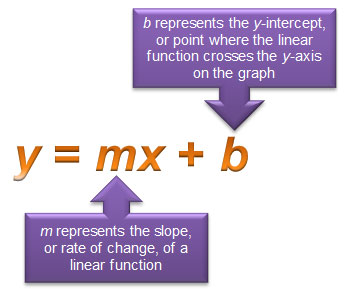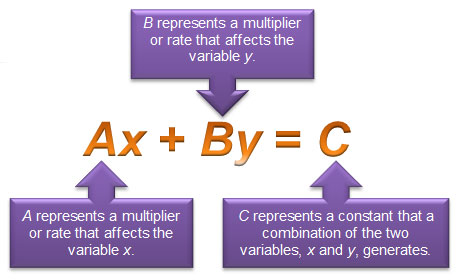
A linear function is a function with a constant rate of change. In a linear function, the x-values change by a constant amount and the y-values change by a constant amount.
One way that you can represent a linear function is called slope-intercept form.

When you have a situation with a starting point, or initial condition, and a constant rate of change, you can frequently represent that situation using a linear function in slope-intercept form.
You may also see situations that result in equations written in standard form. Standard form of a linear equation is Ax + By = C. In this representation, A, B, and C are constants that show the relationship between two variables, x and y.
